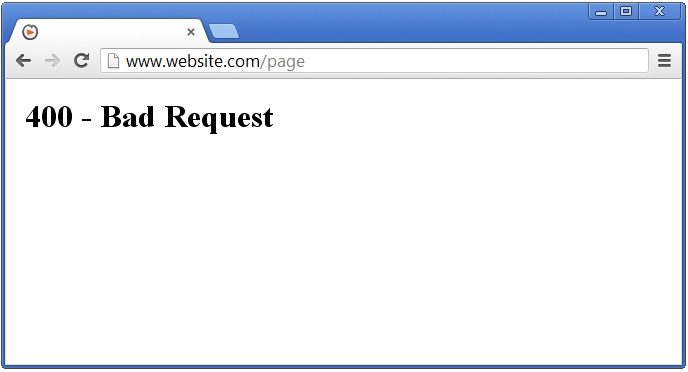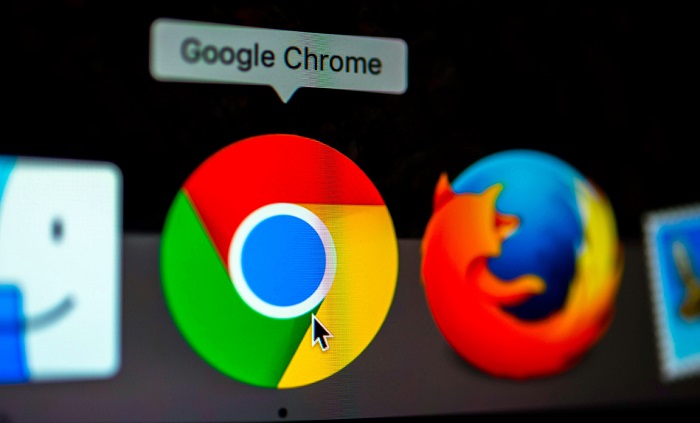You might come across the problem of 400 Bad Request while browsing and surfing many websites. This happens when a website that you are trying to reach is failed to load.
All the errors that are caused because of the invalid or corrupt requests that user requests came under the 4xx family of codes. In this article, we are going to know and fix 400 Bad Request errors. What does this error mean, what causes this error to occur, and some steps to fix this error?
Contents
What Is 400 Bad Request?
It is also known as the HTTP error 400 or just the 400 error. It is a general error code received by the server and it returns to the server after finding that any more errors did not occur and fall under any other error code.

The main point to get to understand is that this error has something to do with the request that has been submitted from any user or client just before it has started processing by the server of the website. HTTP 400 is an error code that indicates that the server is r400 Bad Requestejecting the website request due to some kind of client-side issue.
Because the 404 bad request error is caused by the client (i.e., the device or browser), you can take specific measures to rectify the problem. HTTP 400 is an error code that indicates that the server is rejecting the website request due to some kind of client-side issue.
Because the 404 bad request error is caused by the client (i.e., the device or browser), you can take specific measures to rectify the problem.
How To Fix 400 Bad Request?
We listed out some easy steps on how to fix this error, the below listed steps include-Before delving into the various methods for resolving the 400 Bad Request problem, you may observe that some procedures require clearing locally cached data.
It is true that if your computer did not store any files or data at all, there would most likely be far fewer connection errors. Nevertheless, the advantages of storing cache files/data are widely known, and the online surfing experience would undoubtedly suffer if browsers did not employ caching mechanisms.
It all boils down to a trade-off between efficiency and customer experience, with websites attempting to load as rapidly as possible yet occasionally succumbing to issues such as from a 400 Bad Request with no notice.
1. Check The Submitted URL
Because this is one of the most prevalent causes of a 400 Bad Request error, let’s begin with the apparent cause, the URL string itself. When typing the URL manually into the browser, it is quite easy to insert unnecessary characters.
Ensure that its web address and the particular page you’re attempting to access are accurately written and entered. Also, ensure that they are separated by forwarding slashes. If indeed the Address includes special characters, ensure that they have been successfully encoded and are valid URL characters.
Using an online URL compression codec for lengthy URLs may be easier and less error-prone. These programs will also be possible to perceive prohibited characters in URLs automatically.
When you’re certain, try this again on the web page when you’re certain the URL is accurate. If you continue to receive the 400 Bad Request error, it’s important to clean your cache!
2. Clear Browser Cache
If some locally saved website files are damaged, a 400 Bad Request error will be provided rather than the intended website content. This covers all of the files that a website requires to function properly, such as:
- HTML
- JavaScript
- Text and configuration files
- CSS
- Audio,Images, and video files.
- Files with data (XML, JSON)
The browser saves these files on your local disk when you first visit a website. To resolve this, the browser cache must be cleaned.
In Chrome-
Step 1: Click the three-dot symbol in the upper right corner.
Step 2: Select More Tools. Now select Clear Browsing Data from the list.
This brings up the Clear Browsing and cache Data in a new window. In this room ensure that the Cached pictures and data option is selected, and then click the Clear data option to clean the cached data.
You may also use the Time range option to remove recent files for a certain time range. To ensure that all possibly damaged files are deleted, we recommend removing all locally stored data by clicking on the All-Time option.
The steps would be quite similar if you’re using a different browser. You just need to figure out where is the clear cache option.
3. Clear Browser Cookies
If deleting the cached data in your browser does not resolve the issue, it is time to erase the cookies as well. Dozens of distinct cookies might be used by a single website. If even one of them disappears or becomes corrupted, it may be enough to cause a 400 Bad Request.
To clear your cookies in Chrome-
Step 1: Click the three-dot symbol in the upper right corner. Select More Tools. Now select Clear Browsing Data from the list.
Step 2: To erase all current website cookies, check the Cookies as well as other site data boxes and pick the All-time option to clear them all that build up until now.
After that, try re-launching the website which issued you the 400 Bad Request error. If the site utilizes cookies, deleting them from your browser may resolve the problem, as it is frequently related to corrupt or outdated cookies.
4. File Upload Exceeds Server Limit
When you attempt to upload any file to the website that exceeds the host file size limit, you will receive a 400 Bad Request error. You can try this by first sharing a file that is smaller in size. If this works, the original file was probably too huge, and you’ll need to find a means to shrink it first before sharing it again.
This varies depending on the sort of item you’re attempting to post, however, there are several internet sites that may assist you with compressing huge photos, film, and music recordings.
5. Clear DNS Cache
A further typical reason for a 400 Bad Request is faulty or out-of-date local DNS lookup data. Local DNS data is saved by the operating system rather than the browser.
Also Read:
2. Google Play Services Keeps Stopping
Conclusion
In this article, we learned how to fix the 400-bad request error that occurs frequently. You can use any of these methods and solve the problem as all of the steps provided are tested. Hope it helps you in fixing this error.






![DNS_Probe_Finished_No_Internet Error [RESOLVED] Fix DNS_Probe_Finished_No_Internet Error](https://howandwow.info/wp-content/uploads/2019/09/Fix-DNS_Probe_Finished_No_Internet-Error.jpg)
![Err_Connection_Reset Error in Chrome [RESOLVED] Fix Err_Connection_Reset Error in Google Chrome](https://howandwow.info/wp-content/uploads/2019/09/Fix-Err_Connection_Reset-Error-in-Google-Chrome.jpg)
![Err_Cache_Miss in Google Chrome Error [RESOLVED] Err_Cache_Miss in Google Chrome Error](https://howandwow.info/wp-content/uploads/2019/08/How-to-Fix-Confirm-Form-Resubmission-Error.jpg)





![Steam Missing File Privileges Error [RESOLVED] How to Fix Steam Missing File Privileges](https://howandwow.info/wp-content/uploads/2020/07/How-to-Fix-Steam-Missing-File-Privileges-Error-100x70.jpg)





![SIM Not Provisioned MM#2 Error [RESOLVED] SIM Not Provisioned MM#2](https://howandwow.info/wp-content/uploads/2020/03/SIM-Not-Provisioned-MM2.jpg)







